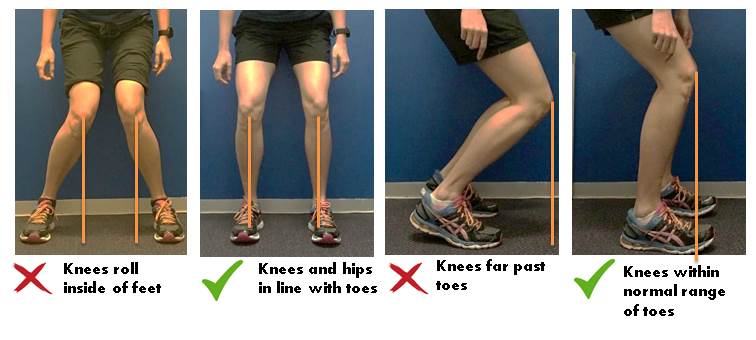5 Tips to help keep you on the Netball Court (and not injured on the sidelines)
Words by Kasia Fedorczyk, Accredited Exercise Physiologist
 Whether you’re playing netball at school, representative, socially or even an Australian Diamond, injuries can happen and are sometimes unavoidable. Good news, is netball being a ‘non-contact’ sport, there is solid evidence to suggest your risk of sustaining an injury can be reduced. Yay!
Whether you’re playing netball at school, representative, socially or even an Australian Diamond, injuries can happen and are sometimes unavoidable. Good news, is netball being a ‘non-contact’ sport, there is solid evidence to suggest your risk of sustaining an injury can be reduced. Yay!
Netball naturally imposes a higher risk of injuries due to the involvement of cutting, jumping, pivoting and quick deceleration. Over time, Netball has become a faster, more physical game and along with this does come an increased susceptibility to injury.
Most common netball injuries:
- Ankles are the most commonly injured amongst netballers
- Knee injuries tend to involve the most time away from the court.
- Wrist sprains, tendon injuries, bruising, fractures and dislocations are also common.
- Most at risk of injury include females, those with previous injuries, those with family history of injures and hypermobility (being extra mobile in your joint and muscle structure).
Injury prevention is better than treatment.
A phrase you have most likely heard a thousand times, yet still an area not emphasized enough!
Below are 5 tips you may be missing out on.
These factors can have a big impact on reducing your risk of injuries and keep you playing the game you love!
 1. Improve your landing technique
1. Improve your landing technique
Common inappropriate landing techniques involve knees excessively going past toes and knee valgus (knees rolling inside of feet). Such knee movements place greater strain on the ACL (anterior cruciate ligament) during landing movements, which increases risk of injury. One way to improve your landing mechanics is by practicing! Strength of your trunk and lower limbs also play an important role in your landing mechanics.
2. Improve your balance
Adding static and dynamic balance exercises to your current training routine has been shown to lower the incidence of recurrent and new ankle sprains. Recurrent ankle injuries affect approximately 50% of netball players, with many reporting ankle instability (unstable ankle sensations like they are about to collapse). A ‘simple sprain’ can lead to long-lasting problems, which highlights the need to prevent an initial acute sprain.
A history of injuries increases your risk of future injuries. Experiencing an injury can have a detraining effect, may change your movement patterns and possibly result in muscles switching off and weakness. A thorough rehabilitation after injury is essential to help alleviate these changes and ensure a safe return to sport.
4. Don’t go from zero to hero
Does this sound familiar? You’ve worked hard all pre-season, attended all scheduled court conditioning and gym sessions. Christmas break comes around, and you’ve enjoyed that sweet 3 week break from training catching up on Netflix. Season recommences and your back into the weekly grind of conditioning, court and gym training with games right around the corner. Warning! Not only will you lose some of the physical fitness and strength that you worked so hard for, but you’re also at increased risk of injury!
The AIS have performed some solid research into this topic as of late, and have found that this is often a common factor amongst injured athletes. So here’s the hot tip. Avoid going from zero to hero. In other words, don’t go from no-to-reduced activity one week, straight into a week of high load the next. This should be taken into consideration all season, holidays and after injuries. If it’s an option, try to keep up with some physical activity over your break and be mindful if you have had time off to ease back into it.
5. See our Accredited Exercise Physiologists
We can discuss your goals, current training and perform a physical assessment. Our Exercise Physiologists can prescribe a specific and individualized exercise program or help ensure your current training is suitable for you. Some areas we may address include mobility, strength, balance, movement, stability, landing mechanics, training load and fitness.
Already injured and aiming to return to netball? See us for that too! We can help ensure you are best prepared for your return to the game.
Bonus Tip! Injury prevention can actually improve your performance!
By simply implementing the strategies discussed above, you can actually improve your game and performance! Injury prevention programs help to improve strength, balance, coordination and flexibility. Netball coaches believed that improved athletic ability and landing techniques were seen in their players after an injury prevention program was implemented.
If you’re not already familiar with what an Exercise Physiologist is, follow this link:Here
If you are want to have a chat about how an Exercise Physiologist can help you, feel free to ask me or front desk staff. I’m always excited to talk about exercise and all it’s benefits!
Phone 07 5500 6470 for an appointment today. Health Fund Rebates available for Exercise Physiology Consults.

